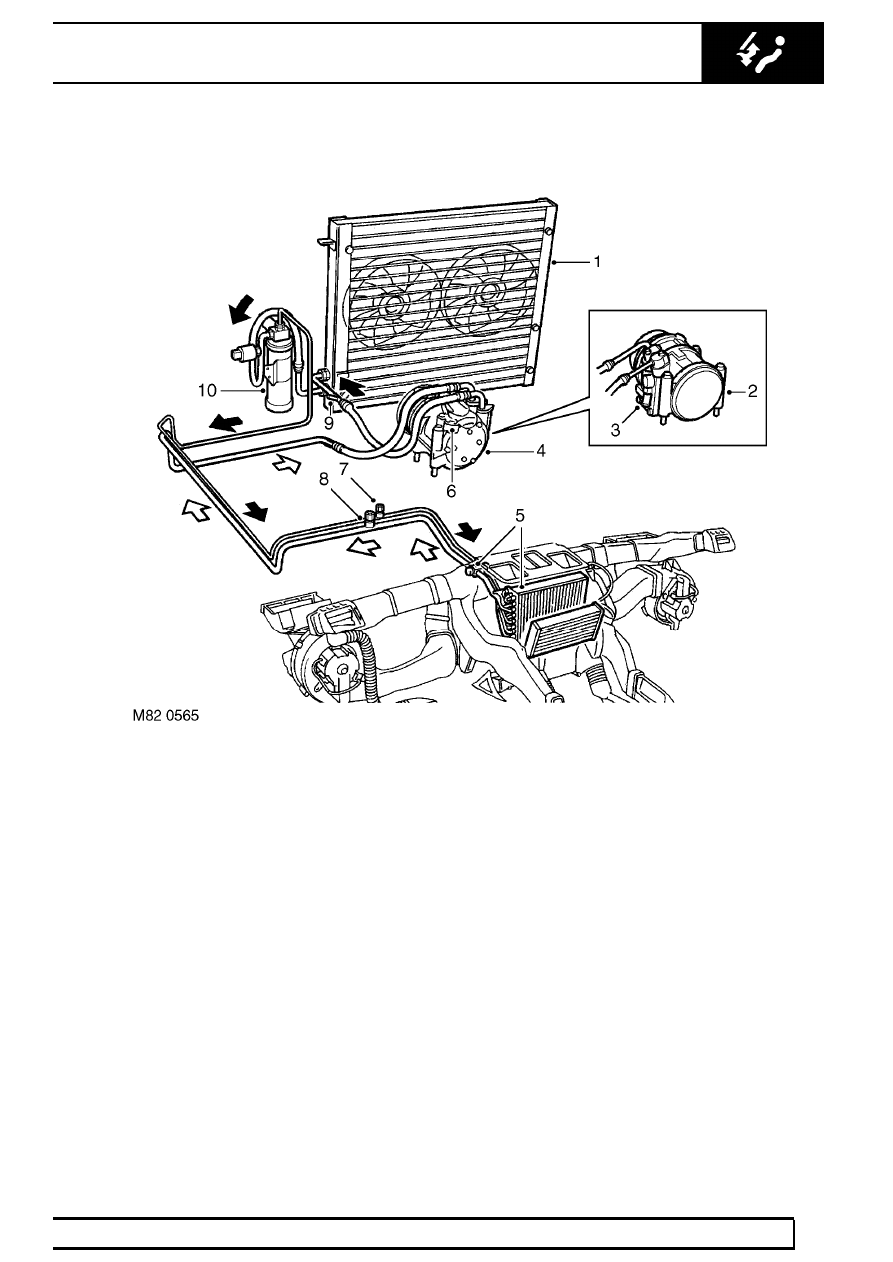Range Rover. Manual - part 286

AIR CONDITIONING
1
DESCRIPTION AND OPERATION
Refrigerant system components - V8 system shown
1. Condenser
2. Compressor (from 99MY)
3. Pressure relief valve
4. Compressor (up to 99MY)
5. Evaporator unit and expansion valve
6. Thermal cutout switch
7. High pressure servicing connection
8. Low pressure servicing connection
9. Pressure relief valve (up to 99MY)
10. Receiver/ Drier